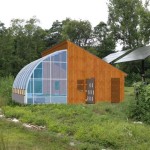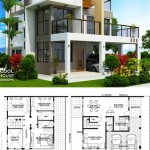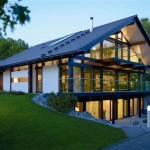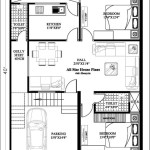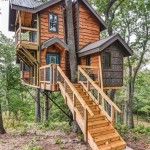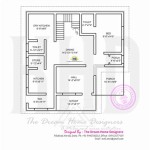Garage Carriage House Floor Plan: A Comprehensive Guide
A garage carriage house floor plan represents a harmonious blend of functionality and aesthetic appeal, drawing inspiration from the traditional carriage houses of the past while incorporating modern garage needs. These structures typically feature a garage on the ground floor, often with multiple bays, and a living space or apartment above. The design offers versatility, serving purposes ranging from guest accommodations and rental income generation to home offices and hobby spaces. This article delves into the essential aspects of garage carriage house floor plans, covering design considerations, structural elements, functionality, and code compliance.
Design Considerations for Garage Carriage House Floor Plans
The design phase of a garage carriage house is crucial, necessitating careful consideration of several factors. Lot size and orientation play a significant role in determining the overall footprint and layout of the structure. A larger lot allows for greater design flexibility, while a smaller lot may require a more compact and vertically oriented design. The orientation of the building relative to the sun's path should be considered to optimize natural light and minimize energy consumption.
Aesthetic consistency with the primary residence is another key consideration. The carriage house should complement the architectural style and materials of the main house to create a cohesive and visually appealing property. Common architectural styles include traditional, modern farmhouse, craftsman, and contemporary, each with its unique characteristics and material palettes. The choice of style should align with the existing architecture and the homeowner's personal preferences.
The intended use of the upper-level living space significantly influences the interior layout. A guest suite might prioritize comfortable bedrooms and a small kitchenette, while a rental apartment would require a fully equipped kitchen, separate living area, and private bathroom. A home office or studio space would necessitate ample natural light, dedicated storage, and a flexible floor plan to accommodate various work activities. The specific needs and preferences of the occupants should guide the design process.
Accessibility is a critical consideration, particularly for aging-in-place or multi-generational living arrangements. Incorporating features such as ramps, wider doorways, and grab bars in the bathroom can enhance accessibility and ensure long-term usability. An elevator or lift can also be considered for accessing the upper level, especially for individuals with mobility limitations.
Finally, the overall design should prioritize energy efficiency and sustainability. Incorporating energy-efficient windows, insulation, and HVAC systems can reduce energy consumption and lower utility bills. Solar panels can also be integrated into the roof design to generate renewable energy and further reduce the environmental impact. Sustainable building materials, such as recycled wood and low-VOC paints, can contribute to a healthier and more environmentally responsible structure.
Structural Elements and Construction Techniques
The structural integrity of a garage carriage house is paramount, requiring careful attention to foundation, framing, and roofing materials. A solid foundation is essential to support the weight of the structure and prevent settling or cracking. Common foundation types include concrete slabs, crawl spaces, and full basements. The choice of foundation depends on soil conditions, local building codes, and the homeowner's preferences.
Framing techniques play a critical role in the structural stability of the carriage house. Wood framing is the most common method, utilizing dimensional lumber to create a skeleton of walls, floors, and roofs. Engineered lumber, such as I-joists and laminated veneer lumber (LVL), can provide increased strength and span capabilities, allowing for larger open spaces. Steel framing is another option, offering superior strength and fire resistance, but it is typically more expensive than wood framing.
Roofing materials significantly impact the aesthetic appeal and weather resistance of the carriage house. Asphalt shingles are the most common and affordable option, offering a wide range of colors and styles. Metal roofing provides superior durability and longevity, but it is typically more expensive. Tile roofing offers a classic and elegant look, but it is heavy and requires specialized installation. The choice of roofing material should consider the architectural style, climate, and budget.
Insulation is crucial for energy efficiency and temperature regulation. Proper insulation in the walls, floors, and roof can significantly reduce heating and cooling costs. Common insulation materials include fiberglass, cellulose, and spray foam. Spray foam insulation offers superior air sealing capabilities, but it is typically more expensive than other options. The R-value of the insulation should be selected based on the local climate and energy efficiency goals.
The construction process itself requires skilled labor and adherence to building codes. Hiring a qualified contractor with experience in building garage carriage houses is essential to ensure a structurally sound and aesthetically pleasing result. Regular inspections by building officials are necessary to verify compliance with local codes and regulations.
Functionality and Utility Considerations
Beyond the structural and aesthetic aspects, the functionality of a garage carriage house is paramount. This includes the accessibility and usability of both the garage and the living space above. The garage should be designed to accommodate the intended vehicles and storage needs. The size of the garage doors, the layout of parking spaces, and the inclusion of storage cabinets and shelving are all important considerations.
The living space above the garage should be designed to maximize comfort and functionality. The layout should be intuitive and efficient, with separate zones for living, sleeping, and cooking. Adequate natural light and ventilation are essential for creating a comfortable and healthy living environment. The inclusion of amenities such as a washer and dryer, a dishwasher, and a well-designed bathroom can enhance the appeal and usability of the space.
Utility connections are a critical aspect of the design. Separate electrical, plumbing, and HVAC systems may be required for the living space, depending on local building codes and the intended use of the space. Submetering the utilities allows for separate billing for the living space, which is particularly important if the space is intended for rental income. The location of utility connections should be carefully planned to minimize visual impact and ensure easy access for maintenance and repairs.
Exterior features, such as decks, patios, and landscaping, can enhance the functionality and aesthetic appeal of the garage carriage house. A deck or patio provides an outdoor living space for relaxation and entertainment. Landscaping can improve the curb appeal of the property and create a more inviting environment. The design of exterior features should complement the architectural style of the carriage house and the main residence.
Lighting is another important consideration, both inside and outside the garage carriage house. Exterior lighting can enhance safety and security, while interior lighting can create a comfortable and functional living environment. The choice of lighting fixtures and the placement of lighting controls should be carefully considered to optimize energy efficiency and create the desired ambiance.
Noise transmission between the garage and the living space should be minimized through the use of soundproofing materials and techniques. Insulating the floor and walls and installing solid-core doors can help to reduce noise transmission. Consider the placement of noisy appliances, such as garage door openers and HVAC equipment, to minimize their impact on the living space.
Security features, such as security cameras and alarm systems, can enhance the safety and security of the garage carriage house. Installing motion-activated lights and reinforcing doors and windows can deter potential intruders. Consider incorporating a smart home system that allows remote monitoring and control of security features.
Ventilation is crucial for preventing moisture buildup and maintaining good air quality in both the garage and the living space. Proper ventilation can help to prevent mold growth and the buildup of harmful gases, such as carbon monoxide. Install exhaust fans in the bathroom and kitchen to remove moisture and odors. Ensure that the garage is properly ventilated to prevent the buildup of fumes from vehicles and other equipment.
Consider the long-term maintenance requirements of the garage carriage house. Choose durable and low-maintenance materials to minimize the need for repairs and replacements. Regular inspections and maintenance can help to identify and address potential problems before they become major issues.
Adaptability is a key consideration for the future. Design the space to be flexible and adaptable to changing needs. Consider incorporating features that can be easily modified or reconfigured, such as movable partitions and flexible wiring systems. This will ensure that the garage carriage house remains functional and valuable for years to come.

Modern Style Carriage House Millard Heights

2 Bed Carriage House Plan With 3 Car Garage 22145sl Architectural Designs Plans

4 Car Carriage House Garage Plan 2152 1 48 X 24

2 Bedroom Carriage House Plans Car Garage With Adu Above

Plan 74803 Garage Apartment Charleston Carriage House For Two Cars

Beautiful Carriage House Plans Garage Apartment W Photos

Carriage Homes Continental Kit

Carriage House Style 4 Car Garage Plan 2402 1 50 X 28

Carriage House Home Sierra Log And Timber

One Car Carriage House Historic Shed Liberty Plans


